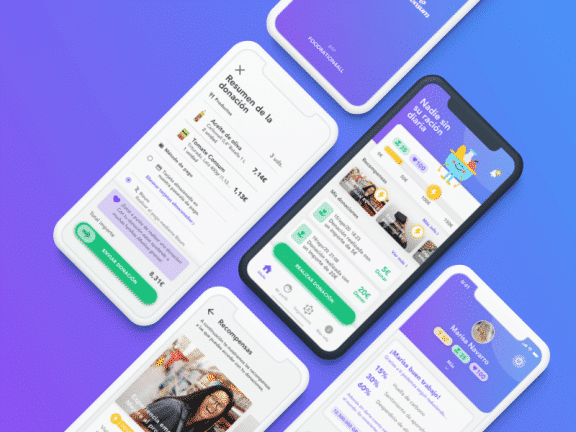Stories...
With a visible social orientation about international conflict that have been forgotten in the news feed or about the exclusion in out cities; to shake your conscience and situate you in the scene. Living a swimming workout in and out of the pool at the same time, from the perspective of the swimmer. Also reports about city-environment or modernity-quality of life tensions. Journalism started to pull itself together with the publication of the first immersive pieces in virtual reality, broadcast in app format to enjoy them with VR glasses, with the aim of reconnecting with an audience that embraces new languages, new formats, and new devices. And not about playing.
In an international tendency that mainstream media like The New York Times (with its own specific app), BBC, Vice News, Associated Press, or Sky News has initiated with pieces of information that are already having an impact like The Displaced: Hana, about Syrian refugees in Lebanon. Its pilot phase has started in Spain by Immersive Journalism Lab, powered by The App Date with the collaboration of TVE, El País, El Mundo, La Sexta, Yorokobu, Cadena Ser, Eldiario.es, Grupo Vocento, and Grupo Zeta, as we saw in el Espacio Fundación Telefónica in Avenue Gran Vía of Madrid, where the first results were shown in the event The App Date Immersive Journalism #TADImmersive which tickets were sold out.

Empathy...
This was the most popular concept among journalists and project’s promoters, as the key to what is presented as new journalistic genre. Thus, the first pieces stemmed from the above-mentioned laboratory, “Urban Beekeeping” and “Urban Countryside, Rural City”, seek to connect with the user in a different way, placing him in the center of action, surrounded by urban bees and honeycomb in the first one– as a new bid to save pollination – or livestock and buildings in the second one, to make him almost a participant and present him with an immersive experience from a perspective that touches him and shakes him, albeit with results, so far, very uneven. Although the piece shot by the team of Salvados with the collaboration of Oxfam Intermón, going inside Madrid’s shacks, in which they explained with some pictures about how the first days of work went, looked very good.
Discussion...
The event served to present VReak app where those first journalistic experiences of the laboratory are collected, but mostly served to open an interesting debate about scripting or not the pieces, the journalist’s role in the direction, intrusive use of VR glasses… and about the doubts and suspicions that it generates as a proof to the embryonic state of both the technology and the production of content that uses it and provides it with a tour. In public, there were in fact some reference journalists like the ex news director of TVE Fran Llorente.
Future...
Anyway, the last commercial launches, the major role it has in the last Mobile World Congress in Barcelona, the great expectation that #TADImmersive generated in Madrid, or the projects in which are working already leading media like TVE are already working, with its Laboratorio rtve.es that prepares some pieces with immersive experiences about athletes who participate in Olympic Games in Brazil; they all leave no doubt that the moment has arrived for this technology to exist in Spain too, this is not a one season cloth. While it is also crucial that immersive experiences begin to meet – in this case we only speak about journalistic field – the high expectations. This s real empathy and not just some pyrotechnics.





